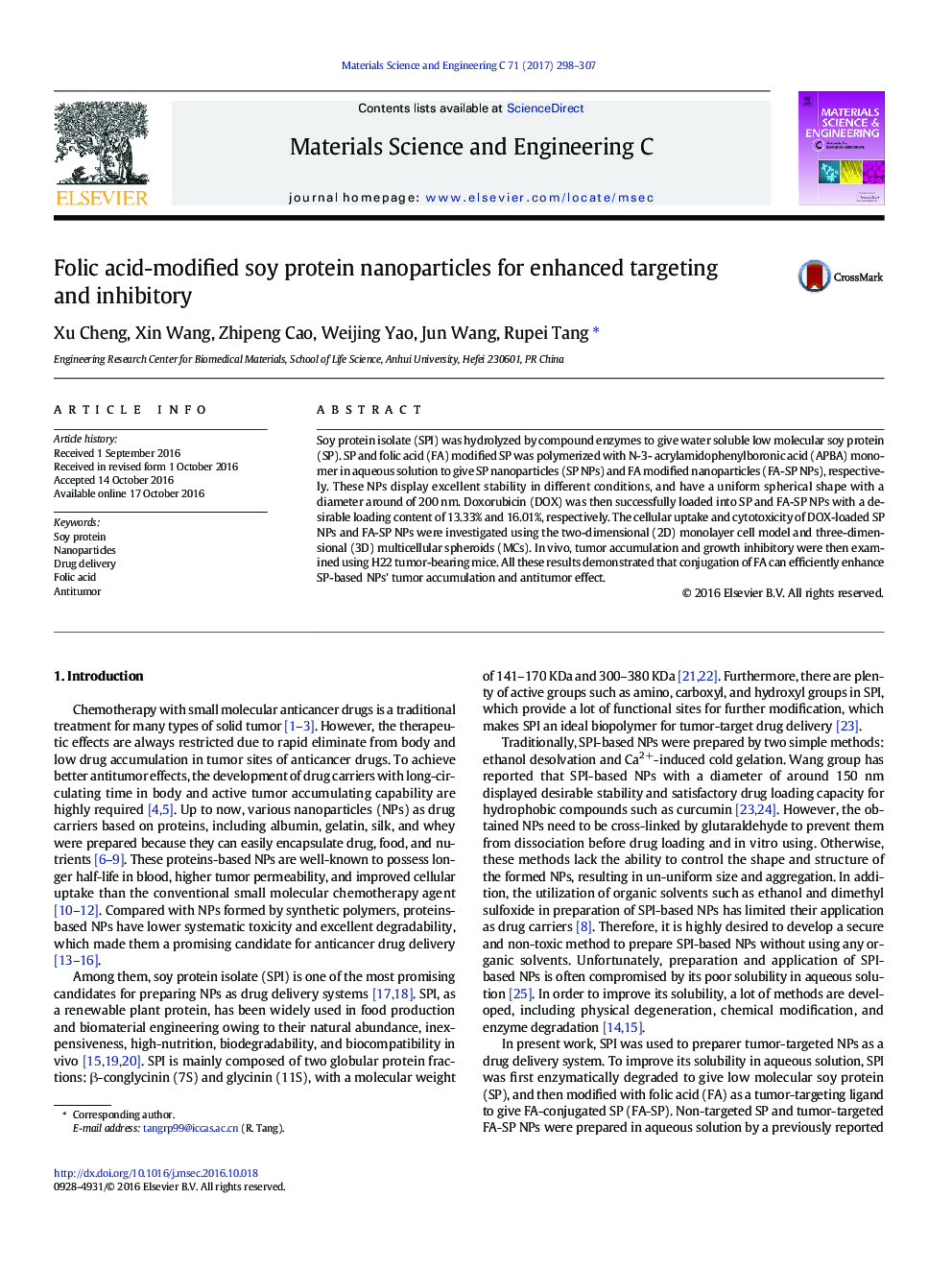| Article ID | Journal | Published Year | Pages | File Type |
|---|---|---|---|---|
| 5434634 | Materials Science and Engineering: C | 2017 | 10 Pages |
â¢Soy protein isolate was hydrolyzed by compound enzymes to prepare nanoparticles.â¢Nanoparticles are spherical like and very stable in various conditions.â¢Cellular uptake and cytotoxicity were investigated in monolayer cell model.â¢3-D multicellular spheroids were using to evaluate nanoparticles' effect.â¢Antitumor effect of these nanoparticles was measured using H22 tumor-bearing mice.
Soy protein isolate (SPI) was hydrolyzed by compound enzymes to give water soluble low molecular soy protein (SP). SP and folic acid (FA) modified SP was polymerized with N-3- acrylamidophenylboronic acid (APBA) monomer in aqueous solution to give SP nanoparticles (SP NPs) and FA modified nanoparticles (FA-SP NPs), respectively. These NPs display excellent stability in different conditions, and have a uniform spherical shape with a diameter around of 200Â nm. Doxorubicin (DOX) was then successfully loaded into SP and FA-SP NPs with a desirable loading content of 13.33% and 16.01%, respectively. The cellular uptake and cytotoxicity of DOX-loaded SP NPs and FA-SP NPs were investigated using the two-dimensional (2D) monolayer cell model and three-dimensional (3D) multicellular spheroids (MCs). In vivo, tumor accumulation and growth inhibitory were then examined using H22 tumor-bearing mice. All these results demonstrated that conjugation of FA can efficiently enhance SP-based NPs' tumor accumulation and antitumor effect.
Graphical abstractDownload high-res image (120KB)Download full-size image
